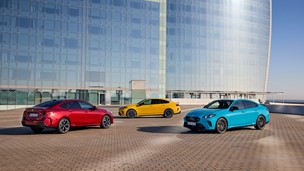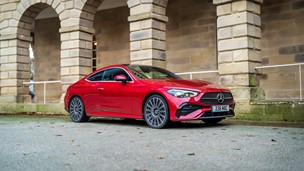Hyundai has been on the up since the financial crisis of 2007, when the Korean firm struck lucky, as it made a very good small car that was further boosted by the government-incentivised Scrappage Scheme. This time around the i10 will have no help, but the good news for Hyundai is that its latest supermini is a cracker. The new model has boosted the Hyundai range, adding to what is already a strong line-up, including the likes of the new i30, the i40 and the refreshed ix35. This second-generation i10 has come a long way; the first iteration was good, but the second gen is much better. From the design to the interior to the engine choices – Hyundai has upped its game. Performance 4/5 We drove the 85bhp 1.2-litre engine mated to a manual five-speed gearbox. On the road, the Hyundai performed fairly well and it is a vast improvement on the previous iteration. The driving dynamics have been enhanced and it feels more on a par with Ford’s Ka and VW’s Up! – a brilliant feat showcasing how far the Korean company has come in recent years. Performance figures for the i10 are fair. It will complete the benchmark sprint in 12.3 seconds and has a top speed of 100mph while the 74bhp Skoda Citigo powered by a three-cylinder 1.0-litre engine will get from zero to 62mph in 13.2 seconds and has a top speed of 106mph. Ride and handling 4/5 Dynamically, this car is worlds apart from the previous iteration. The steering feel is on the light side but direct and, when in town, this makes it a cinch to park. The i10 is larger, lower and stronger and has an improved suspension making it fun on the twisty stuff. It has great front-end grip while it is good on turn-in when driving enthusiastically. Equipment 4/5 For a small car, the Hyundai is well kitted out. Highlights on our test car included 14-inch wheels, central locking, electric front windows, a CD/radio unit with a USB socket, daytime running lights, ISOFIX child seat mountings six airbags – two front, two front door and two full-length curtains – electronic stability control and a tyre pressure monitoring system. And there’s more - other features that come as standard include electric and heated door mirrors, body-coloured door handles, air conditioning and a height-adjustable driver’s seat. Running costs 3.5/5 Our test car was powered by the 85bhp 1.2-litre SE and has a claimed average of 57.6mpg while emitting 114g/km of CO2. This version has a fair amount of power for its size while working out to be reasonably frugal. This version starts at £10,650. Verdict 4/5 The i10 has plenty of tricks up its sleeve: it’s cheap to run, cheap to buy and comes with that clever marketing strategy of offering a five year warranty for peace of mind. This car, in our opinion, will drive the brand forward in the competitive city car segment and if it had not been up against the BMW i3 in its UK Car of the Year award, then it may well have scooped a COTY award. It really is that good.

Our Rating



